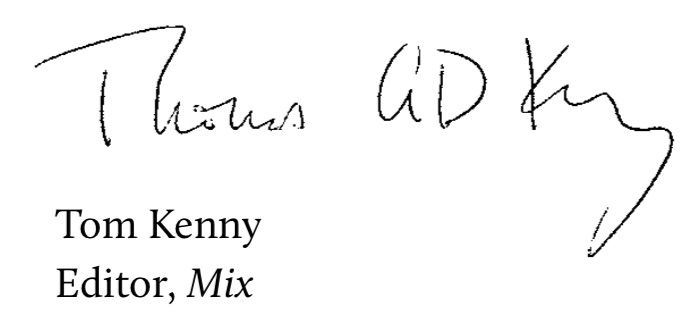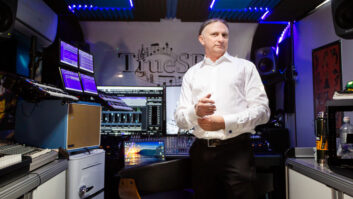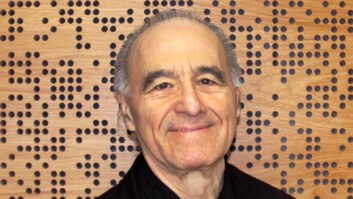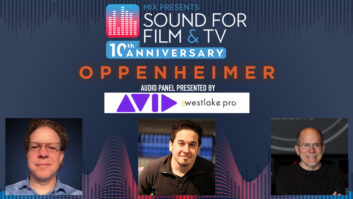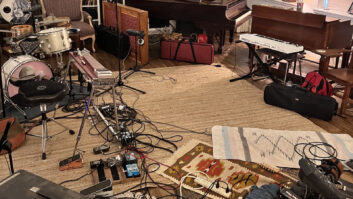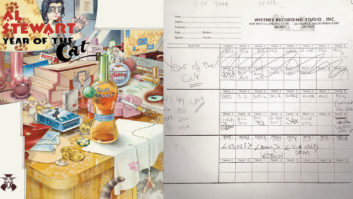A few weeks have gone by since the photo shoot, but I still can’t believe that 40 years after first being mesmerized by Apocalypse Now as a 16-year-old, Mix is featuring the legendary director Francis Coppola and John Meyer, equally talented in his own left-brain, science-and-reason-based way, on the cover.
Full-disclosure: Apocalypse Now is certainly one of my top five desert island movies. And John Meyer is certainly one of the top five minds I have met in my 30 years with Mix. And as part of my job is to select each month’s cover story, I willingly admit to playing favorites in this particular choice. But it’s much more than that.
Over the years, one of the threads in this column has been my fascination with the interaction of the left and right lobes of the brain through the corpus colossum. The logical and the creative, the ego and the id, science and the arts. The fluid interaction between technology and the arts has always seemed to me especially pronounced in professional audio, embodied in people like the late, great Stephen St. Croix, George Massenburg, Jack Joseph Puig and many, many others. That interaction between the left and the right takes place across all the entertainment arts, of course it does; but it sure seems prevalent in audio.
On this month’s cover we have the epitome of the Scientist and the Bard! Sitting left and right. Sound & Cinema. Talking about the low end.
“What John and I understand is that John is ‘a creative on the technical side,’” says Helen Meyer, co-founder of the company. “So from the beginning, really starting with Francis Coppola, we would partner with these artists who would want something that hasn’t yet been done, something that would help them to create. That has pushed us forward as a company in every thing we do. It has pushed us to create an experience for the artist and their audience, whether it’s in cinema, or a show like Cirque, or a world-class symphony hall.”
With the 40th anniversary re-release of Apocalypse Now: Final Cut, there will be plenty of stories focused on the visuals, the stories and the legacy. I doubt you’ll find one based around the 40-year friendship and collaboration between two such brilliant minds, where the focus is on Infrasonics and the decades-long desire to deliver the true impact of war—in all its rumbling, roaring, visceral, gut-punching, bone-rattling terror—through sound.
And let’s not forget the movie, which stands the test of time and will someday go down as one of the finest examples of storytelling through the unity of sound and picture. Everything in the film is real; no digital effects, no compositing. What you see is what they shot. And Walter Murch’s groundbreaking, Oscar-winning sound design absolutely changed the way we hear films, representing perhaps the epitome of his lifelong search for the balance of Clarity and Density in a track. You don’t have to like war movies to appreciate the artistry, both audio and visual, in every frame.
At the same time, during the waning days of 70mm prints, it basically ushered in Dolby 6-channel sound, with split surrounds, the forerunner to 5.1 Dolby Digital in the early 1990s. And now, Final Cut is ushering in a new dimension of low-frequency energy, down below the audible range to 13 Hz, where we feel, then hear, or sometimes hear, then feel, the true impact of what war might actually feel like out there in the real world.
I didn’t know any of this at 16, when I had to drive 40 miles to West Lafayette, Ind., for the nearest movie theater. I’m sure the screen was small and the sound bled through the walls. I probably heard it in stereo. But I didn’t know about all that. I just remember being mesmerized, transfixed, horrified and enthralled all at the same time.
As my daughters Molly and Jesse like to say, “Dad, they don’t pay you enough, but the perks sure are good.” They’re right. The night after I write this, I’ll be driving up to Skywalker Sound in Marin County with my movie buddy and longtime friend and colleague Greg Sutton for a special-invite screening of the film, with an introduction by Walter Murch. The Stag Theater is one of the finest in the world, for sound and picture, with a full-on Meyer Sound, Dolby Atmos system, newly calibrated and supplemented with four VLFCs.
I’m ready for the ride down the river and the scream of “Arc light!” I’m ready for the napalm and the tiger. The rain in the jungle. Wagner immersing the room. For a fan of sound and cinema, it doesn’t get much better than that.
